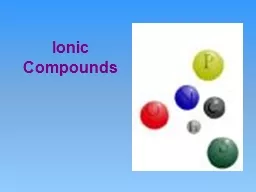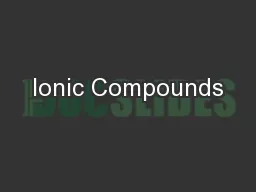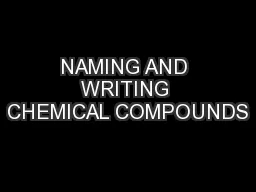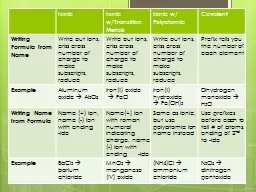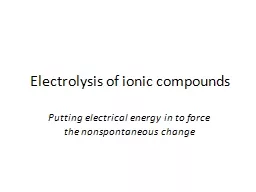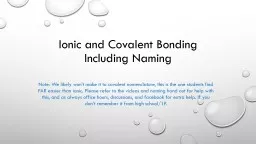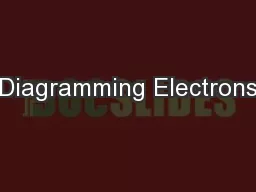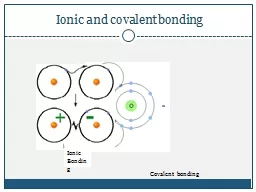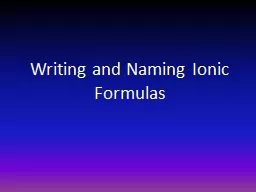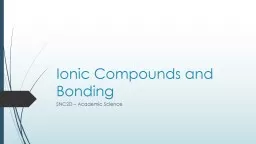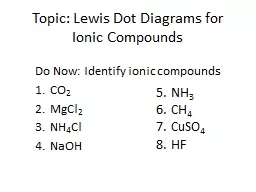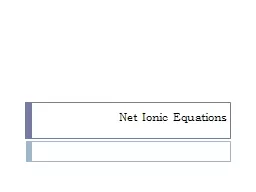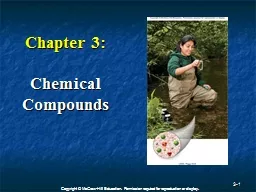PPT-Ionic Compounds Lewis Dot Diagrams
Author : WiseWhale | Published Date : 2022-08-04
Chemical Interactions Occur between the Valence Electrons Dots represent valence electrons When atoms combine to make molecules they form chemical bonds Valence
Presentation Embed Code
Download Presentation
Download Presentation The PPT/PDF document "Ionic Compounds Lewis Dot Diagrams" is the property of its rightful owner. Permission is granted to download and print the materials on this website for personal, non-commercial use only, and to display it on your personal computer provided you do not modify the materials and that you retain all copyright notices contained in the materials. By downloading content from our website, you accept the terms of this agreement.
Ionic Compounds Lewis Dot Diagrams: Transcript
Download Rules Of Document
"Ionic Compounds Lewis Dot Diagrams"The content belongs to its owner. You may download and print it for personal use, without modification, and keep all copyright notices. By downloading, you agree to these terms.
Related Documents

